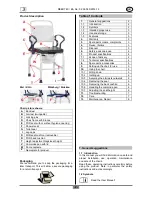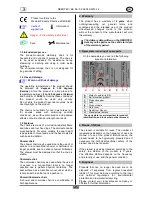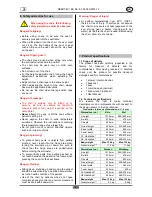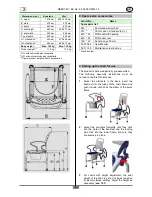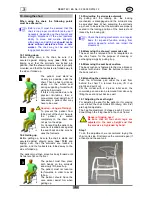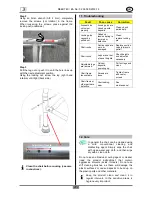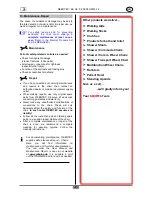
REBOTEC / BA No.: 02.06.083/2016-12
GB
- 6 -
10. Using the chair
When using the chair, the following points
must be adhered to:
Before use it must be assured that the
chair is in a proper condition for safe use. If
necessary, depending on the physical and
strength limitations of the user (patient’s
ability to move and muscle strength),
sitting down and getting up
should not be
done
without assistance from a care
worker.
The chair may not be used for
long patient transport times.
10.1 Sitting down
Before sitting down in the chair, be sure it is
secured against slipping away (
see:
10.9
) and
tipping over, that the armrests are locked into
position, that the shower/commode seat is properly
mounted, and that the footrests are folded away to
the side or folded up.
The patient must stand as
closely as possible near the
chair. Then he has to sit down
slowly on the whole seat
during supporting himself with
using both armrests.
If this is not possible due to his
physical limitations, then a
care-worker must assist him. If
necessary a patient lifter may
have to be used.
Caution
– danger of falling!
To prevent the patient from
falling out of the chair, be sure
the
patient
is
seated
completely on the chair, and
not just on the edge.
For transporting the patient, be
sure he is leaned back against
the seat back and be sure he
uses the footrests.
10.2 Getting up
Before getting up, be sure the chair is stable and
secured against slipping away
(see: 10.9)
and
tipping over, that the armrests are locked in
position, and the footrests are folded away to the
side or folded up.
The patient must then move his body forward until
his feet are flat on the floor.
The patient must then place
both hands on the armrests
and slowly lift himself up.
The patient must not lean too
far forwards, in order to avoid
falling.
The patient should have the
care worker assist him when
getting up.
10.3 Swivelling the armrests outwards
By pulling out the locking pin, the locking
mechanism is disengaged and the armrests may
be swivelled back. When swivelling the armrests
up, check to be sure that the armrests are properly
seated in the locking position of the backrest and
locked by the locking pin.
Check the locking mechanism on a regular
basis for impaired function arising from
calcium deposits, which can impair the
movement.
10.4 Removing the shower / commode seat
The seat can be removed from its receptacles on
the chair frame for the purpose of cleaning or
exchanging simply by pulling it up.
10.5 Removing the seat back cushion
The back cushion is fastened to the cross-brace or
backrest with studs. Press the buttons to remove
the back cushion.
10.6 Handling the commode pan
Push the commode pan under the seat from
behind the chair. To remove the pan, lift it up
slightly and pull it out.
For the model with a 2-piece toilet seat, the
commode pan can also be removed from above by
lifting the seat and put back as well.
10.7 Adjusting the seat height
For adjusting the seat for the patient or for placing
over a toilet, the chair models Würzburg, Ulm, Kiel
are height adjustable.
The height-adjustment (2 stages: each 25 mm) is
done through the 4 leg inserts in the chair frame.
Danger of tipping over!
Be sure that all four chair legs are
adjusted to the same height and that
the screws are tightened by hand.
Step 1
To do the adjustment, we recommend laying the
chair on its side. First remove the commode pan (if
at hand) and the seat unit.
2
1
3


